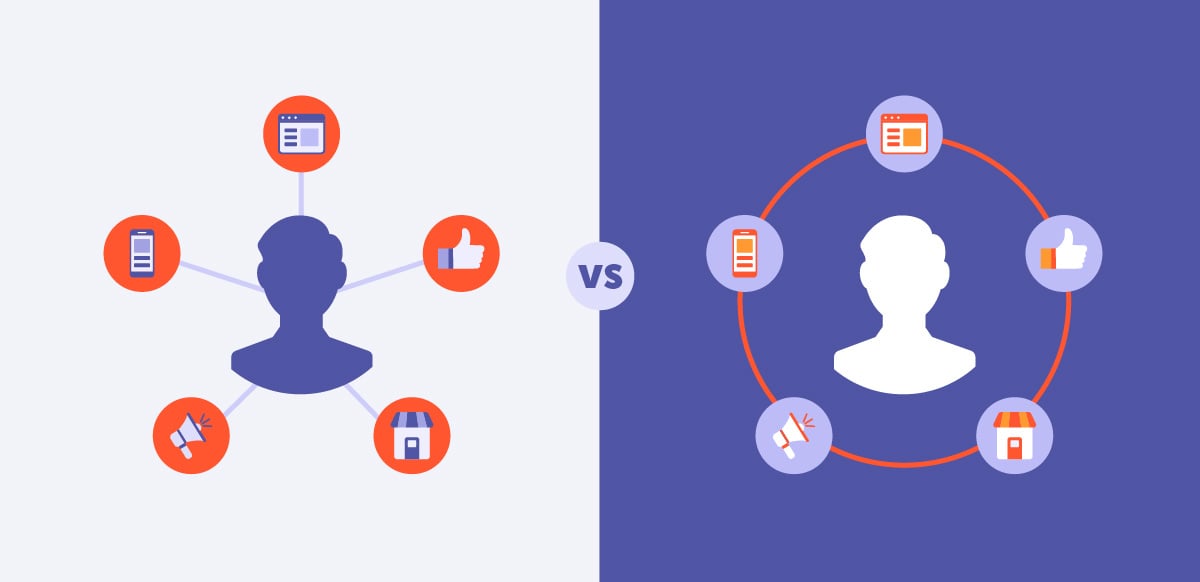Multichannel and Omnichannel Simplified

Multichannel marketing (often just called multichannel) is the concept of allowing customers to complete interactions using the channel of their choice, whether online and offline. For example, if customers can interact with your business through a website, social media, email, telephone, or in person, that is a multichannel experience.
The Challenges of a Multichannel Approach
Multichannel has some challenges and limitations. Often, the various channels end up operating in silos that don’t work together as one integrated system. For example, if online sales are handled by different teams than retail location sales, the customer may detect—or even be annoyed by—inconsistencies between the channels. There may be a difference in pricing online as compared to in the store. There may be miscommunication between channels. It may not be possible for an online order to be seamlessly returned to a store.
Integrated Channels are the Expectation
Multichannel is a step in the right direction, but once customers can interact with a company through multiple channels, their expectations keep rising. Customers expect that channels are integrated. When I interact with a friend, I expect that some of those interactions will be in person, by phone, by text, and maybe even through social media and email. I choose the format based on the needs of the interaction. And because my friend integrates with all those forms of communication, I expect that when I see my friend in person, he will be aware of the interactions we had via various channels.
The answer to those natural expectations is called omnichannel and is the next logical evolution in customer experience. Omnichannel is about thinking of your customer’s experience across all communication methods and touchpoints. In an omnichannel approach, all the ways that you connect with customers are integrated to provide richer experiences.
One Experience Across all Marketing Channels
In some ways, omnichannel is aspirational, because it may be impossible to ever fully achieve an omnichannel experience. But the value in thinking in an omnichannel way is that it breaks you out of the constraints of thinking of channels in silos. Instead of thinking of a customer as a website customer or an in-store customer, omnichannel means thinking of them as a customer who may visit through a website, visit in person, call a customer service phone number, send an email inquiry, or interact through an app. The customer does not expect those to be five isolated experiences. Therefore, it is important that we strive to make those experiences seamless, consistent, and relevant.
In an earlier blog post about your website being your top business location, I used Amazon as an example of omnichannel.
"Amazon is an example of a company that has become omnichannel in a big way. What began as a website now includes mobile apps, Kindle devices, Alexa devices, store experiences, and more. And what makes it omnichannel is that they all work together.
I may see an Amazon deal in my email, add that item to a shopping cart on my laptop, complete the purchase from a mobile app, pick up my order from a locker at an Amazon pickup location, and re-order it later by speaking to my Alexa. Minutes after a package is delivered, I may get a notification on my phone or see the details of the delivery on the website. Future email marketing and suggested products on the website and the mobile app are now influenced by the order I recently placed. That is omnichannel."
The goal of omnichannel is that customers should be able to choose their own journey and have a positive and consistent experience regardless of the customer journey they choose.
In summary, multichannel allows interaction through multiple channels. Omnichannel adds integration among the channels to put the customer first in the formula. Becoming omnichannel begins with a shift in perspective. Rather than a perspective of simply “How do we make it possible for customers to interact through multiple channels?” omnichannel puts us in the shoes of the customer asking “What is my customer expecting as they interact through multiple channels?”



